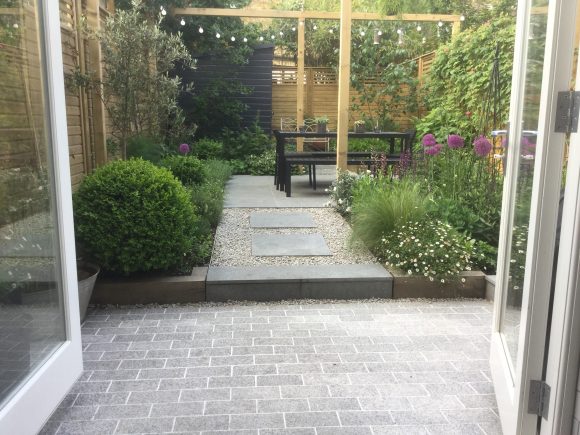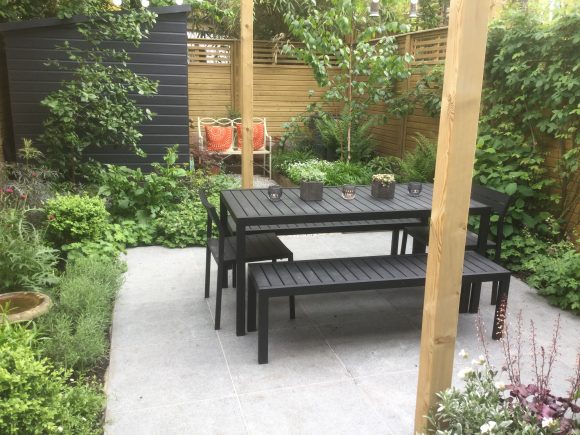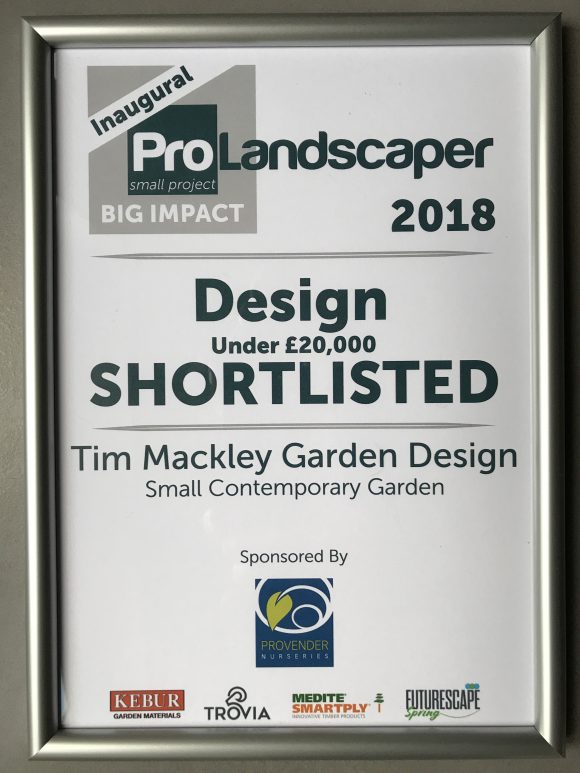Garden Design Award Finalist
I’m delighted to have been shortlisted as one of the finalists for the inaugural ProLandscaper Small Project Big Impact Awards 2018. The design was a small contemporary garden that cost under £20,000 for the build and planting. All of which just goes to show that smaller gardens with limited budgets can be just as challenging, interesting and rewarding to design.




